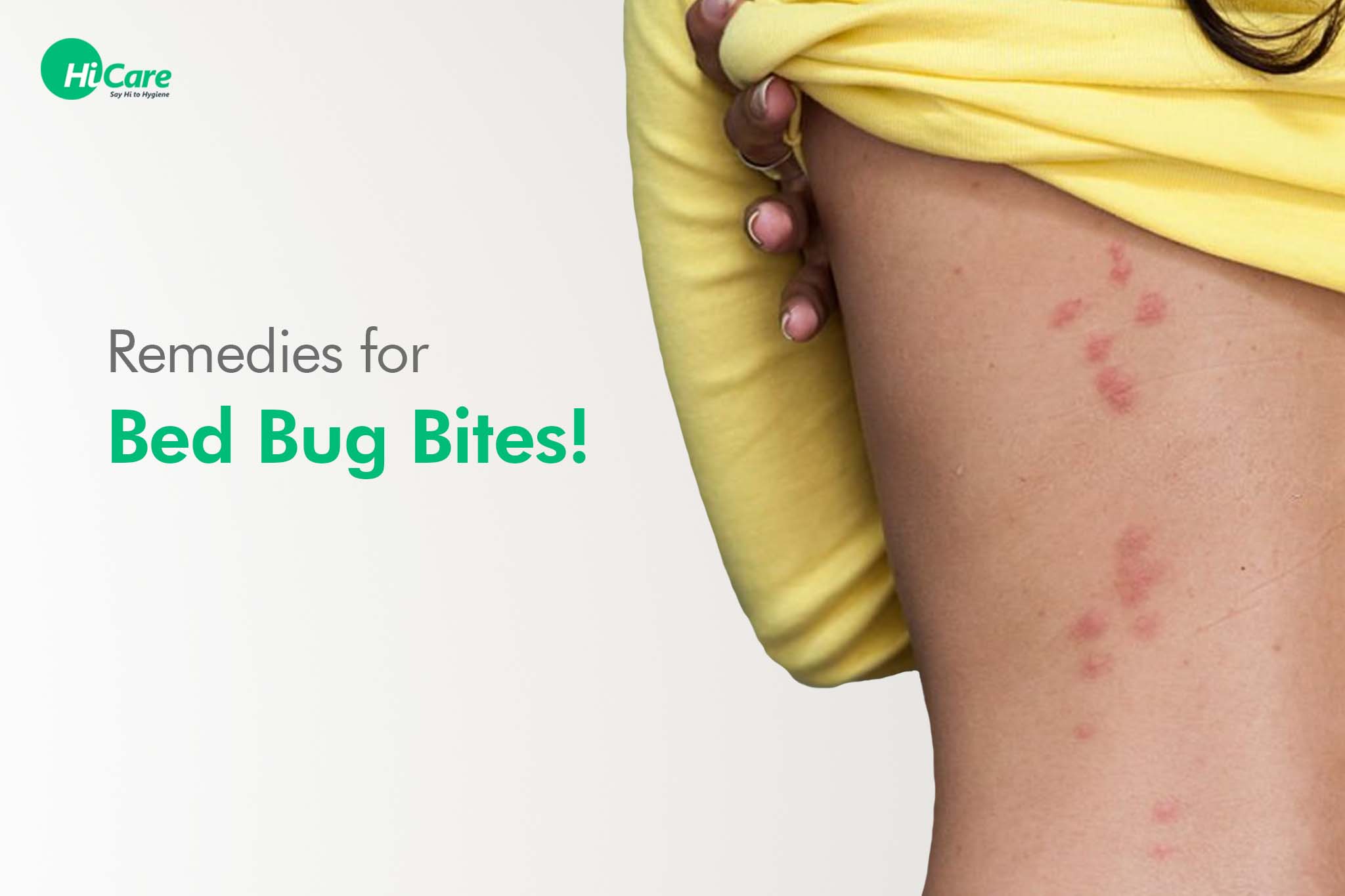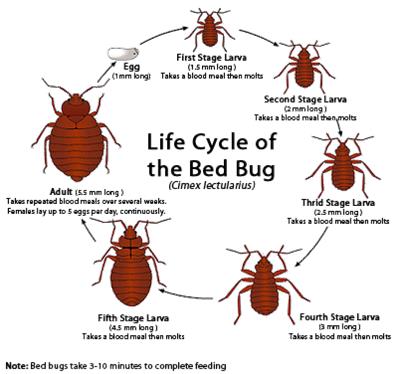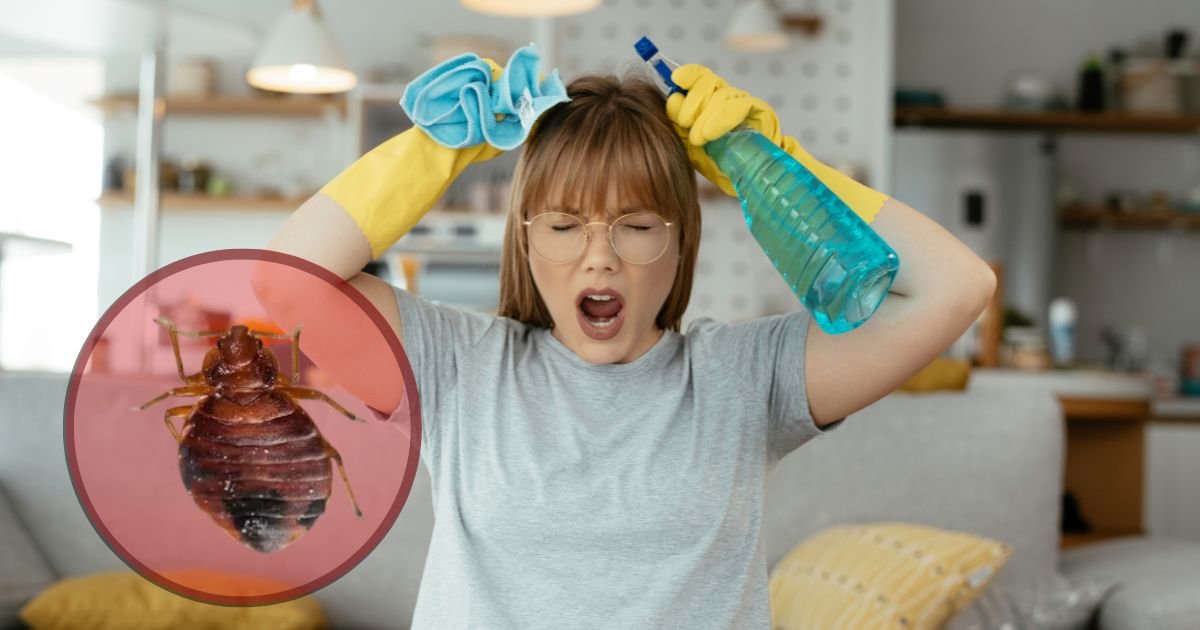Dealing with bed bugs involves thorough cleaning, using specialized treatments, and seeking professional pest control help if needed. It’s essential to take quick and comprehensive action to eliminate bed bugs and prevent their reinfestation.
Bed bugs are persistent pests that can cause distress and discomfort. If you’re dealing with a bed bug infestation, it’s crucial to act promptly and effectively. By following the proper steps and utilizing targeted treatments, you can successfully eradicate bed bugs from your home.
In this guide, we’ll discuss effective strategies for dealing with bed bugs, including practical tips for cleaning, treatment options, and when to seek professional assistance. With the right approach, you can reclaim your home from bed bugs and restore peace of mind. Let’s dive in and explore the best methods for addressing this common household nuisance.
Identifying Bed Bugs
Identifying bed bugs is the first crucial step in dealing with an infestation. These minuscule pests are notorious for their ability to hide out of sight and make a meal of unsuspecting sleepers. Knowing how to recognize their physical characteristics and common hiding spots can help you take decisive action to eliminate them from your home.
Physical Characteristics
Bed bugs are small, flat, and oval-shaped insects, with an adult reaching about 4-5mm in length. They typically have a reddish-brown color, turning darker after a blood meal. Their bodies are wingless and they move quickly over floors, walls, and ceilings with a distinctive musty odor.
Common Hiding Spots
- Bed bugs have a preference for residing in cracks and crevices, such as mattress seams, headboards, and nearby furniture.
- They can also be found in electrical outlets, picture frames, and behind loose wallpaper.
- When an infestation is severe, they may scatter into less common areas, such as behind baseboards and inside drawers.
Signs Of Bed Bug Infestation
Bed bugs are annoying pests that thrive on blood, causing discomfort and distress. Detecting their presence early on is crucial for effective control. Understanding the signs of bed bug infestation can help you take immediate action to address the problem. Here are some key indicators to look out for:
Bite Marks On Skin
One of the most common signs of a bed bug infestation is waking up with bite marks on your skin. These bites are usually red, itchy, and appear in a cluster or a line. They are often found on exposed areas such as the face, neck, arms, and legs. While the bites themselves are not usually painful, they can cause discomfort and lead to skin irritation.
Blood Stains On Sheets
Another telltale sign of bed bugs is the presence of blood stains on your sheets or pillowcases. When the bed bugs feed, they can leave behind small blood smears on your beddings. These stains are usually brownish or reddish in color and may appear as small dots or smudges. Finding these stains is a strong indication that bed bugs are present and actively feeding.
If you suspect bed bug infestation, thoroughly inspect your bedding for these blood stains. Pay close attention to crevices, seams, and folds of your mattress, as well as any cracks or gaps in the bed frame. Additionally, you should examine other common hiding spots, such as the furniture around your bed and the wall joints.
Other Indicators
- Dark or rusty spots: Bed bugs also leave behind dark or rusty spots of excrement on mattresses, furniture, or walls.
- Musty odor: A distinct, sweet, musty odor may be present in rooms heavily infested with bed bugs.
- Shed skins: Bed bugs shed their exoskeletons as they grow, which can be found near their hiding spots.
If you notice any of these signs, it’s important to take immediate action to eliminate the infestation. Contact a professional pest control service to help you get rid of bed bugs effectively and prevent their return.
Prevention Methods
Preventing a bed bug infestation is much easier than dealing with one. By following a few simple prevention methods, you can safeguard your home and keep those pesky critters at bay.
Regular Cleaning Practices
Maintaining cleanliness in your home is one of the most effective ways to prevent bed bugs from infesting your living space. By incorporating regular cleaning practices into your routine, you can significantly reduce the chances of a bed bug invasion.
To keep bed bugs at bay:
- Regularly vacuum your carpets, rugs, and upholstered furniture, paying close attention to areas where bed bugs can hide, such as seams and crevices.
- Dispose of the vacuum bag or empty the canister immediately after use to prevent any captured bed bugs from escaping back into your home.
- Wash your bedding, including sheets, pillowcases, and blankets, in hot water regularly. Hot water effectively kills any bed bugs or their eggs that may be present.
- Dry your bedding on the highest heat setting possible. The heat will help eliminate any remaining bed bugs.
- Seal any cracks or crevices in your walls, baseboards, and furniture, as bed bugs can easily hide and breed in these areas.
Use Of Mattress Encasements
Mattress encasements are specially designed covers that completely enclose your mattress, preventing bed bugs from infesting it. By using mattress encasements, you create a protective barrier that eliminates their hiding spots and makes it difficult for them to survive.
When selecting a mattress encasement:
- Choose a high-quality encasement that is specifically designed to prevent bed bugs from entering or escaping.
- Ensure the encasement completely covers your mattress and has a secure zipper closure. This will prevent any bed bugs from crawling onto your bed.
- Regularly inspect the encasement for any signs of bed bugs, such as blood stains or fecal matter. If you notice any signs, take immediate action to address the issue.
By incorporating regular cleaning practices and using mattress encasements, you can effectively prevent bed bugs from invading your home and enjoy a peaceful, bug-free sleep.
Natural Remedies
Discover effective natural remedies to tackle bed bug infestations. These methods offer safe and eco-friendly solutions for managing these unwanted pests in your home. Implement these strategies to combat bed bugs without the use of harmful chemicals.
Natural remedies can be an effective solution for dealing with bed bugs, offering a chemical-free approach to tackling infestations. Diatomaceous Earth and Lavender Oil are two natural remedies that can help to eradicate bed bugs and provide relief from their bites. Let’s explore these natural remedies in more detail.Diatomaceous Earth
Diatomaceous Earth is a natural, fine powder that can effectively kill bed bugs by dehydrating and eventually killing them. It works by damaging the exoskeleton of the bed bugs, leading to their demise. To use Diatomaceous Earth, simply sprinkle a thin layer of the powder in areas where bed bugs are present, such as under the mattress, along baseboards, and in cracks and crevices. Leave the powder for a few days before vacuuming it up and repeating the process if necessary.Lavender Oil
Lavender oil is known for its pleasant fragrance, but it also has insect-repellent properties that can deter bed bugs. You can create a homemade bed bug spray by mixing a few drops of lavender oil with water in a spray bottle. Spray the solution on infested areas, including bedding, furniture, and carpets, to repel bed bugs. Additionally, you can use lavender oil in a diffuser to create a calming atmosphere while keeping bed bugs at bay.Using natural remedies such as Diatomaceous Earth and Lavender Oil can be an effective way to combat bed bug infestations without resorting to harsh chemicals. By integrating these natural remedies into your bed bug treatment plan, you can achieve a pest-free environment while prioritizing safety and eco-friendliness.Professional Treatment Options
Discover professional treatment options to effectively address bed bug infestations. Expert solutions offer thorough inspections, targeted treatment plans, and ongoing monitoring for complete eradication. Trust specialized services to ensure a pest-free environment and peace of mind.
Dealing with bed bugs can be a frustrating and overwhelming task. While DIY remedies may provide temporary relief, sometimes professional treatment options are necessary to fully eliminate these pesky pests from your home. There are a few different professional treatment options available, including chemical treatments and heat treatments, that have been proven to be effective in eradicating bed bug infestations.
Chemical Treatments
Chemical treatments involve the use of specially formulated insecticides that are designed to kill bed bugs on contact and provide residual protection against future infestations. These treatments are typically performed by professional exterminators who have the knowledge and experience in applying the chemicals safely and effectively.
During a chemical treatment, the exterminator will thoroughly inspect your home, identifying areas where bed bugs are hiding, such as mattresses, furniture, and cracks in walls. They will then apply the chemical treatment to these areas, ensuring that it reaches all the hiding spots where bed bugs may be lurking.
Chemical treatments are a popular choice because they are known to be highly effective and provide long-lasting results. However, it’s important to follow all safety instructions provided by the exterminator and take any necessary precautions to minimize exposure to the chemicals during and after the treatment.
Heat Treatments
Heat treatments are another professional option for dealing with bed bugs. This method involves raising the temperature in the infested area to a level that is lethal to bed bugs, typically around 120°F to 140°F. The high temperatures penetrate and kill both adult bed bugs and their eggs, ensuring complete eradication.
During a heat treatment, professional exterminators use specialized heating equipment to raise the temperature in your home or specific areas, such as bedrooms, where bed bugs are present. They will closely monitor the temperature to ensure that it remains at the appropriate level for a sufficient amount of time to kill all the bed bugs.
Heat treatments are appealing because they are chemical-free, making them a safe option for households with children, pets, or individuals with chemical sensitivities. Additionally, heat treatments can reach areas that may be difficult to treat with chemicals, such as inside walls or deep crevices.

Credit: www.purcorpest.com
Dealing With Bed Bugs In Different Settings
Homes
Inspect your home regularly for signs of bed bugs to catch them early.
- Regularly wash and dry bedding, curtains, and clothing on high heat.
- Vacuum your mattress, bed frame, and carpet frequently.
Hotels
Check hotel reviews for any mentions of bed bugs before booking a room.
- Store luggage on a luggage rack away from the bed.
- Inspect the bed and surrounding areas for signs of bed bugs upon arrival.
Handling Bed Bug Infested Items
Dealing with bed bugs can be a frustrating and challenging experience, particularly when it comes to handling infested items. Whether it’s clothing or furniture, it’s essential to know the best methods for managing these items to prevent the further spread of bed bugs. Taking the right precautions and using effective techniques can make a significant difference in eradicating these pesky pests from your home. Let’s delve into how to handle bed bug infested items effectively.
Clothing
Bed bugs are notorious for hiding in the seams and folds of clothing, making them particularly difficult to eliminate. If you suspect that your clothing has been infested with bed bugs, it’s crucial to take immediate action to prevent the spread of these pests. Here are some steps you can take to deal with bed bug infested clothing:
- Seal infested clothing in a tightly sealed plastic bag to prevent bed bugs from spreading to other areas.
- Wash the clothing in hot water (at least 120°F) and dry it on the hottest setting to kill any bed bugs and their eggs.
- Consider using a professional pest control service to treat infested clothing items if the infestation is severe.
Furniture
Bed bugs can also take up residence in furniture, making it essential to address infestations promptly to prevent further spread. Here’s how to handle bed bug infested furniture:
- Inspect the furniture thoroughly to identify the extent of the infestation.
- If possible, encase infested furniture in specially designed bed bug-proof covers to isolate the pests and prevent them from escaping.
- Consider using steam treatment on furniture to kill bed bugs and their eggs effectively.
- Consult a professional pest control service for more severe infestations or for guidance on best practices for addressing bed bug infested furniture.

Credit: hicare.in
Long-term Bed Bug Management
In this section, we will discuss effective long-term bed bug management strategies that you can implement to prevent future infestations. By following these steps, you can maintain a bed bug-free environment and enjoy a peaceful and restful sleep.
Regular Inspections
Regular inspections are the key to catching bed bug infestations early on. By being proactive and regularly checking your home for signs of bed bugs, you can prevent a small infestation from becoming a widespread problem.
Perform thorough inspections in the following areas:
- Beds and mattresses: Check between the mattress and box spring, along mattress seams, and under the bed frame.
- Furniture: Examine sofas, chairs, and other upholstered furniture, paying close attention to seams and crevices.
- Electrical outlets and wall voids: Bed bugs can hide in these areas, so be sure to inspect them regularly.
- Cracks and crevices: Check baseboards, floorboards, and any other potential hiding spots for bed bugs.
Creating A Barrier
Creating a barrier is an effective method to prevent bed bugs from infesting your space. By implementing the following strategies, you can significantly reduce the likelihood of future bed bug infestations:
- Seal cracks and crevices: Use caulk to seal any cracks or crevices in walls, baseboards, and furniture to prevent bed bugs from entering or hiding in these areas.
- Install bed bug-proof encasements: Protect your mattresses and box springs by using bed bug-proof encasements. These encasements create a barrier that bed bugs cannot penetrate, preventing infestations from developing.
- Use interceptors: Place interceptors under bed legs to trap and monitor bed bugs. This can help detect early signs of infestations and prevent them from spreading.
- Reduce clutter: Keep your living spaces tidy and free of clutter. Bed bugs can hide in piles of clothing, papers, or other items, so minimizing clutter makes it harder for them to establish a presence.
By regularly inspecting your home and implementing strategies to create a bed bug barrier, you can effectively manage bed bugs in the long term. Remember, early detection and prevention are key to avoiding prolonged infestations and their associated hassles.

Credit: www.capncm.org
Frequently Asked Questions For How To Deal With Bed Bugs?
What Are The Signs Of A Bed Bug Infestation?
Signs of a bed bug infestation include small red bites on the skin, blood stains on bedding, and dark spots (fecal matter) on mattresses or furniture.
How Does One Get Rid Of Bed Bugs?
To get rid of bed bugs, thoroughly clean and vacuum the infested area, wash bedding and clothes in hot water, and use an insecticide specifically labeled for bed bug control.
Can Bed Bugs Live In Your Hair?
While bed bugs prefer to feed on exposed skin, they can crawl into your hair or hide in your hair accessories. However, it’s rare for them to establish themselves solely in hair.
Conclusion
Managing a bed bug infestation requires swift action and thorough treatment. By following the steps outlined, you can effectively eradicate these pests and prevent future outbreaks. Don’t hesitate to seek professional help for severe cases. Stay vigilant and proactive in protecting your home from bed bugs.
Related posts:

I’m MD Tanvir, and I bring years of expertise gained from working closely with pest control companies to the forefront. My journey in the industry has inspired me to launch Bug Battler, a platform aimed at equipping people with the know-how to combat pests autonomously. Through Bug Battler, I aim to empower individuals with practical insights to tackle pest infestations effectively.

